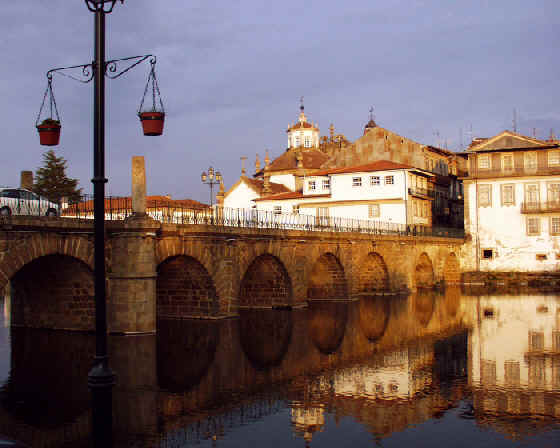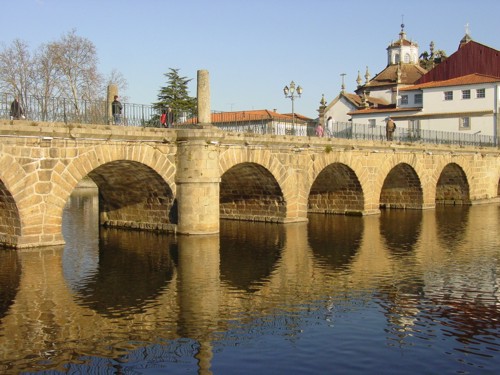| |||||||
Europe
North AmericaSouth AmericaAsiaAustralia and OceaniaAfrica |
Смотрите также: Roman Bridge (Chaves) The Roman Bridge at Chaves is an ancient bridge located in the north of Portugal in the town of the same name.
Roman Bridge Carries Road Astorga-Braga Crosses Tamega Locale Chaves, Portugal Design Arch bridge Material Stone Total length 140 m Longest span 8.9 m Number of spans 12 (visible) Opening date Probably reign of Domitian (81–96 AD)
History and construction The bridge which is in relatively good shape unites the two most important parishes in the town. The bridge is 140 meters long, high and has 12 visible arches. Although the bridge spanning the Minho in Ourense is longer and higher, this example of Roman architecture is even today a masterpiece of construction. Two of the columns of the original bridge, built by the Emperor Trajan, still stand. They are stout cylindrical columns with details of the honors bestowed by the emperor on local governors or generals clearly legible on them. They were also milestones indicating distances to the important settlements of Astorga in Spanish León and Bracara Augusta, Braga, in Portugal. The bridge was built between the end of the first century and the beginning of the second century AD. Little is known about the exact dates of the beginning or conclusion of construction. However, it is known that slaves captured from the peoples inhabiting the region worked on the bridge. This appears to be written on one of the columns placed in the middle of the bridge. These columns were not here originally. One of them mentions the construction of the bridge, referring to the reign of the emperor Trajan; the other was taken from the Roman road leading up to the bridge. Before the building of the bridge the crossing was made by a road raised above the bed of the river, which only allowed the river to be crossed in summer. Allowing the river to be crossed at any time of the year, the bridge was an important factor of development for the town, but it was also necessary and useful for the Pax Romana: here there were hot springs visited by a lot of people; in the region there were mines with precious metals, whose product was taken to Rome; across the bridge passed the important Roman road of Braga to Astorga, with a lot of traffic; and lastly here was quartered a numerous detachment of legionnaires of the Roman army. The bridge has suffered many modifications, for restoration and conservation. The fortified tower that was built at the entrance was long ago demolished and the stone sides were substituted by iron. The span was widened and footpaths put in. The floor, originally covered by large granite blocks, now is covered by paving stones. Comments: 0 |
|
|||||








































